
views
X
Trustworthy Source
Cleveland Clinic
Educational website from one of the world's leading hospitals
Go to source
Medical professionals do not recommend trying to perform a self-exam due to the training required to reach accurate conclusions. However, if you wish to administer your own exam, this guide will describe the techniques used by healthcare professionals, as well as indicators you may need a professional prostate exam or screening.
- Lay on your side with your knees pulled into your chest. Then, put on a sterile latex glove, lubricate the index finger, and insert your finger gently into your rectum.
- Locate the prostate against the rectal wall toward your belly button. Feel for tenderness, bumps, hardness, or inflammation that may indicate a problem.
- Get a professional exam to confirm if there is a problem. Your provider will likely perform a DRE themselves and/or a prostate-specific antigen (PSA) blood test.
Checking Your Prostate at Home

Consider having your doctor do the exam for accuracy and safety. Though it may seem relatively simple to perform, prostate exams require proper technique and the ability to understand what you are feeling for. Unless you’re a medical professional, you likely can’t accurately examine your own prostate. Possible complications of self-examination include bleeding due to nail punctures of cysts or other masses. This can lead to infection or other complications, which would require a trip to your doctor regardless. In addition, if your self exam is abnormal and you seek advice from your doctor, they will most likely repeat the exam to confirm the results anyway.
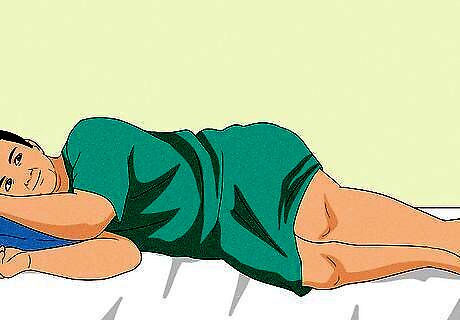
Undress and lay on your left side with your knees pulled into your chest. If you must examine yourself at home, assuming this position provides the easiest access to your rectum for you or a partner. This is the same position a doctor would have you lie in if you were to schedule a prostate screening (or any other rectal exam). Alternatively, stand leaning forward with your hips flexed if it’s uncomfortable to lie down. There is no preparation to be done before the exam. Some assume they may have to have or hold a bowel movement beforehand, but this isn’t necessary.

Inspect the area around your bottom for any skin conditions. Use a hand mirror or ask a partner to check for external hemorrhoids, anal fissures, skin tags, warts, or discharge. These conditions will make the self-exam more uncomfortable or even painful, and you may risk puncturing these growths or infecting them if the exam is not done with care. Note: If you encounter any of these conditions, strongly consider stopping your self-examination and scheduling a DRE with a medical professional.
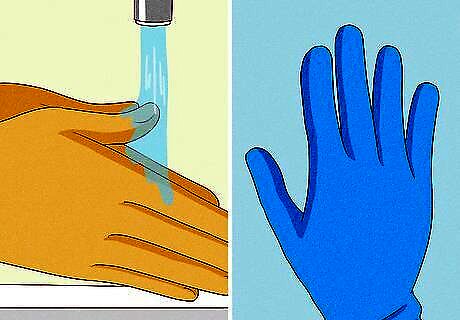
Put on a sterile disposable glove or have your partner put one on. Wash your hands thoroughly before touching the glove to put it on to avoid spreading germs to the glove. Even though you’ll only use your index finger for the exam, your entire hand and all fingers should be covered. Closely trim your fingernails before washing your hands and putting on the glove if you have long or unkempt nails. Even through the latex, you can accidentally scrape the area or puncture a cyst or other mass.

Lubricate the index finger of the glove. Apply a liberal amount of the lubricant, making sure the index finger is coated all the way around and down to the knuckle. A lubricant such as Vaseline or KY Jelly will allow easier, less stressful penetration into the rectum.
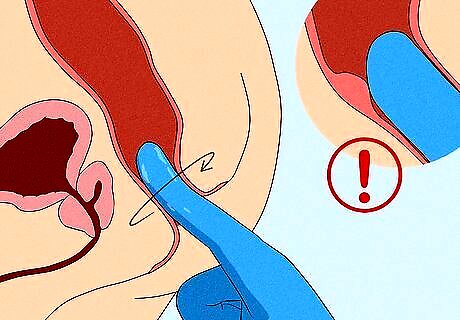
Feel the walls of your rectum for abnormalities. Slowly and gently insert your index finger into your rectum. Turn the finger in a circular motion to feel for any bumps or lumps that could indicate cancer, tumors, or cysts along the walls of your rectum, working from 6 o’clock to 12 o’clock in one direction, then in the other. If no abnormalities are present, the walls should be smooth with a consistent shape. Use gentle pressure. It may feel uncomfortable, but you should not feel severe pain during insertion.

Feel the wall of your rectum toward your belly button for your prostate. Your prostate lies above or in front of this portion of your rectal wall. Abnormal findings as you feel toward your prostate include firm, bumpy, non-smooth, enlarged, and/or tender areas. A healthy prostate is about the size of a walnut. It should have a rubbery, soft feel with a slight groove in the middle separating it into left and right sections. Firm or hard regions on the prostate, called nodules, or asymmetrically sized halves may be an indicator of cancer or other problems.
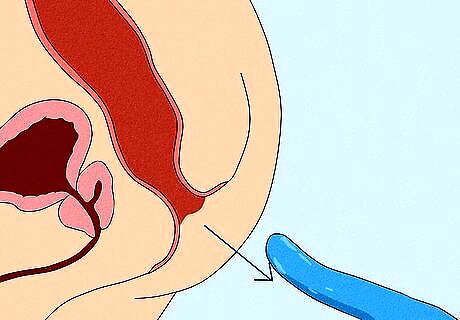
Remove your finger slowly and gently. In a professional setting, the entire exam will take approximately 10 seconds or so. Once you’ve palpated the prostate for a few seconds to check for abnormalities, there’s no need to continue the exam as this can cause further discomfort or irritation. Dispose of the glove and wash your hands again immediately.

Contact your doctor for a followup consultation or exam. Make sure to visit with your doctor for further tests and discussion. If you feel like your exam showed abnormalities, then make an appointment with your doctor right away. Remember to tell the physician that you administered a self exam if it’s been less than two days since this can result in an elevated PSA level on other tests.
When to Get a Prostate Screening

Schedule a prostate screening with your doctor if you’re age 50 or over. The American Cancer Society suggests a yearly prostate screening for all men age 50 and above. However, some circumstances and risk factors may warrant screenings at an earlier age. These include: Age 40 for men with more than one first-degree relative (son, brother, or father) who had prostate cancer before age 65. Age 45 for men with a single first-degree relative who had prostate cancer before age 65. Age 45 for African American men due to carrying a higher risk of prostate cancer.

Get an exam if you have any urinary symptoms caused by the prostate, like bloody urine. Problems associated with your bladder, urethra, and penis can all potentially have ties to prostate issues. Due to the proximity of the prostate to these systems, it can grow and press against them, causing dysfunction. With prostate issues you may experience the following: Slow or weak urine streams Difficulty urinating Frequent urination at night Burning urination Blood in your urine Difficulty getting an erection Painful ejaculation Lower back pain

See your doctor quickly if you have any urinary symptoms. A variety of ailments may be responsible for your symptoms that a DRE alone cannot diagnose. A DRE is just one of several tests your doctor may use to determine the health of your prostate. Your doctor may order a transrectal ultrasound (TRUS) to check for suspicious tissues inside of your rectum. A biopsy may also be necessary to confirm or rule out cancer.
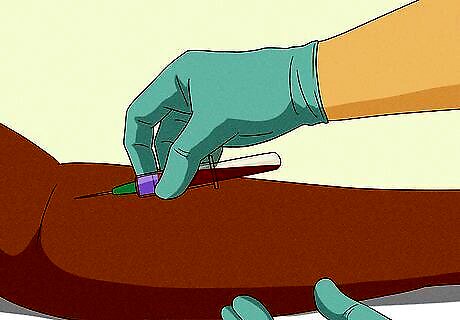
Request a prostate-specific antigen (PSA) test during your doctor's visit. Your doctor will order a laboratory blood test to check your PSA levels (a specific protein found in your prostate) in the event of prostate abnormalities or urinary symptoms. Typically, a PSA level of 4 ng/mL or lower is considered normal. PSA levels can cause false positive or false negative results. The United States Preventive Task Force advises against prostate screening with PSA levels alone due to these risks. Ejaculation (recent sexual activity), prostate infection, digital rectal examination (DRE), and bike riding (due to pressure on the prostate) can cause elevations of PSA. Those without prostate symptoms and elevated PSA may require repeat testing after two days. Repeat elevated PSA levels may warrant a DRE and/or a biopsy of the prostate (a needle inserted to take a piece of the prostate tissue for analysis) if symptoms are present. Men with a PSA of less than 2.5 ng/mL may only need to be retested every two years. Get screened yearly if your PSA level is 2.5 ng/mL or higher.




















Comments
0 comment